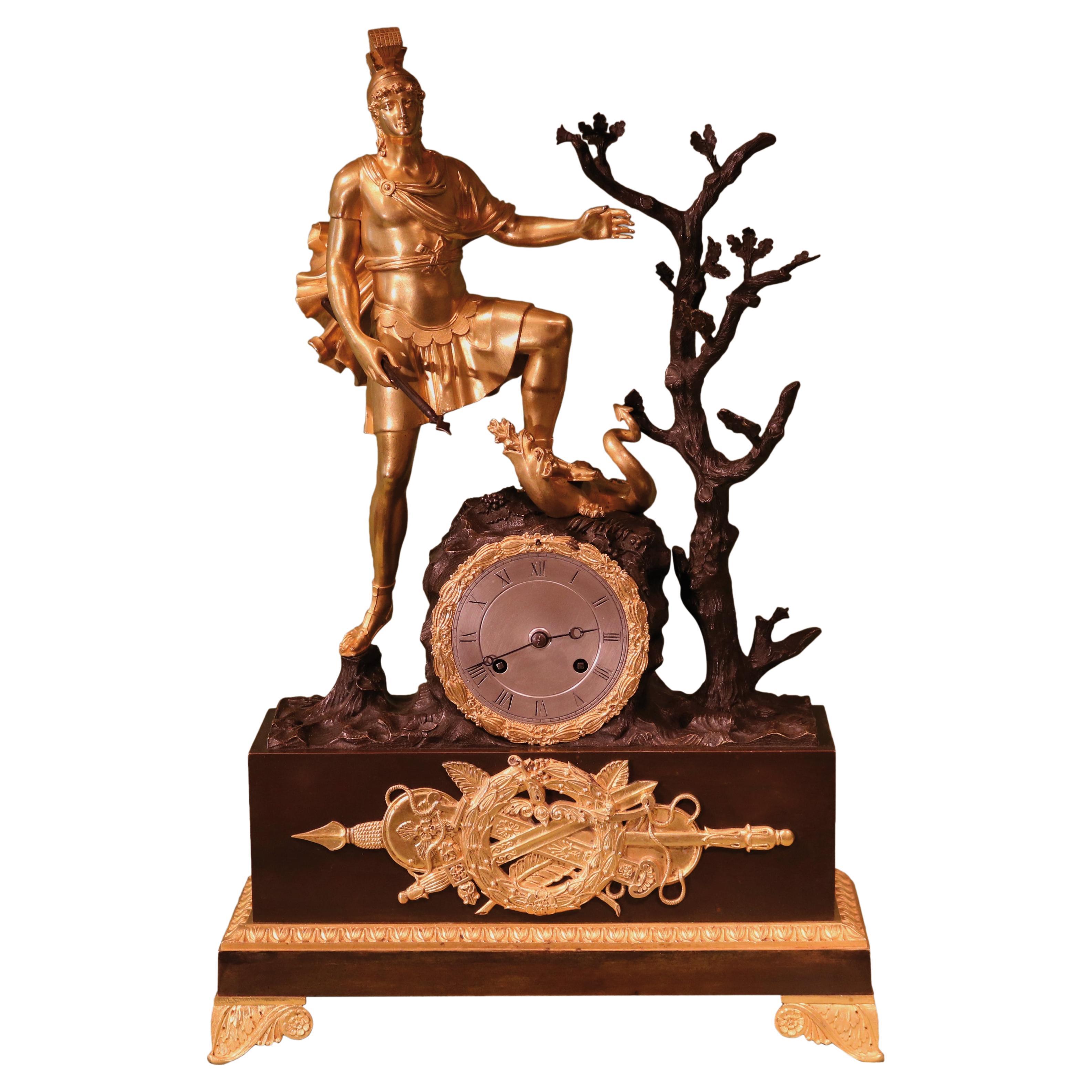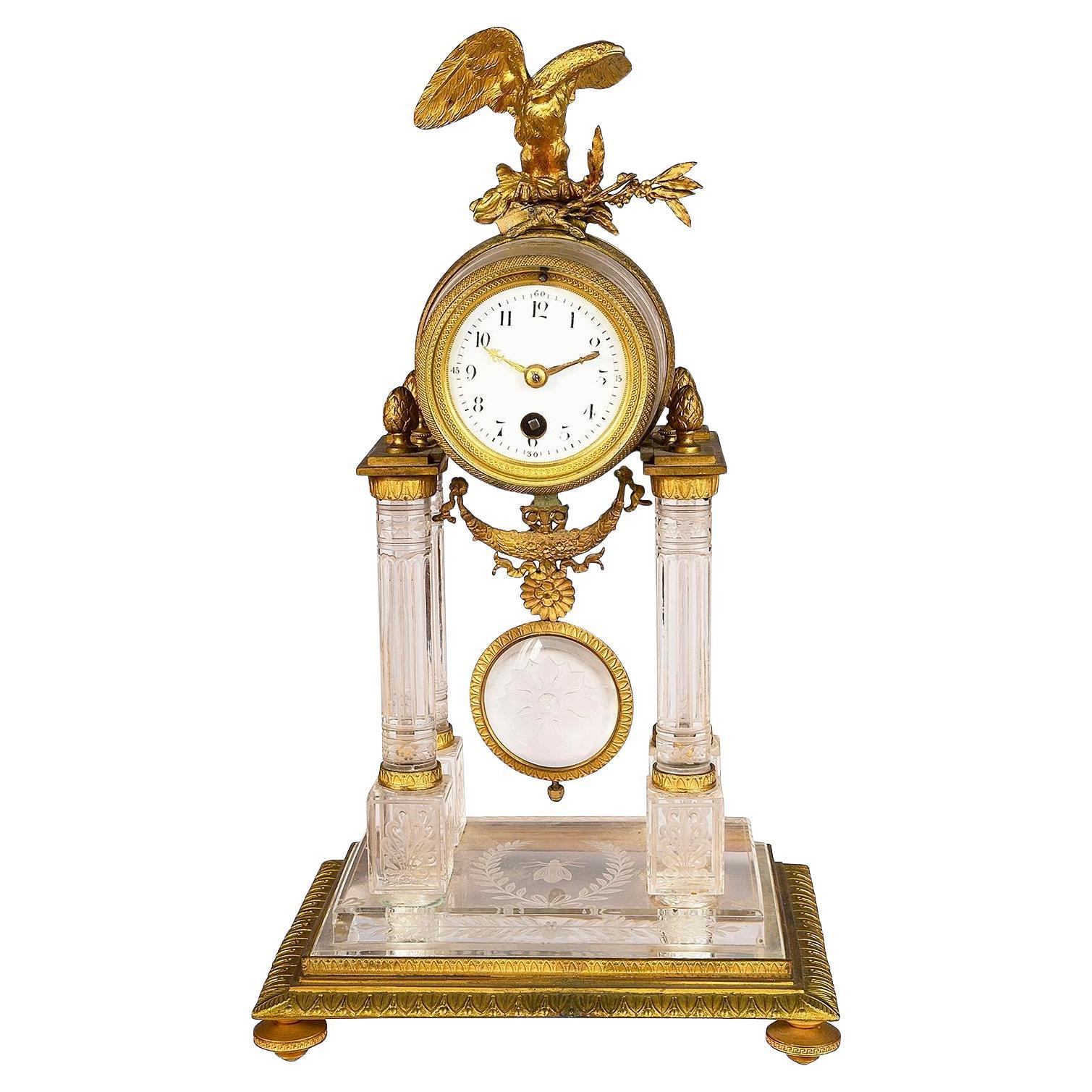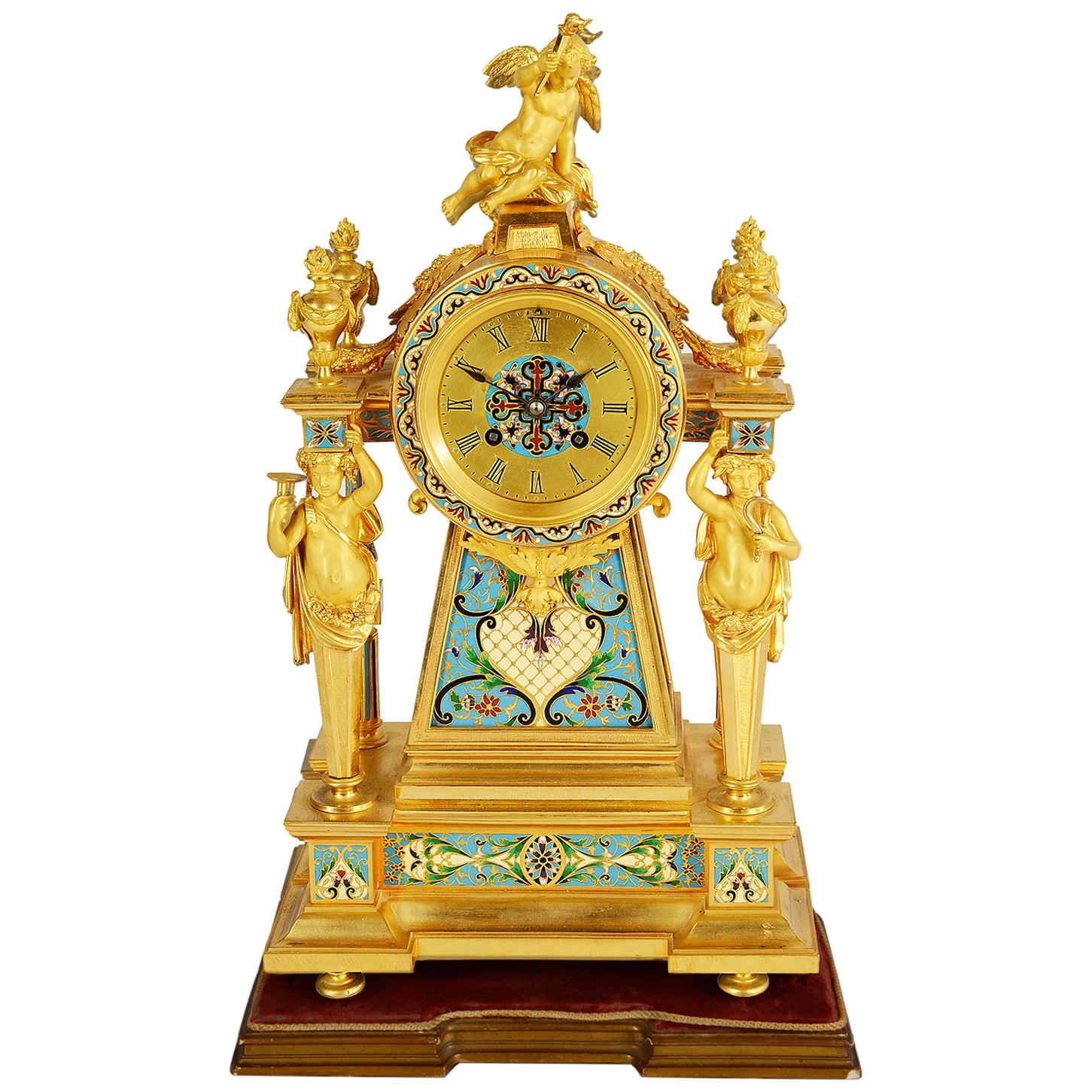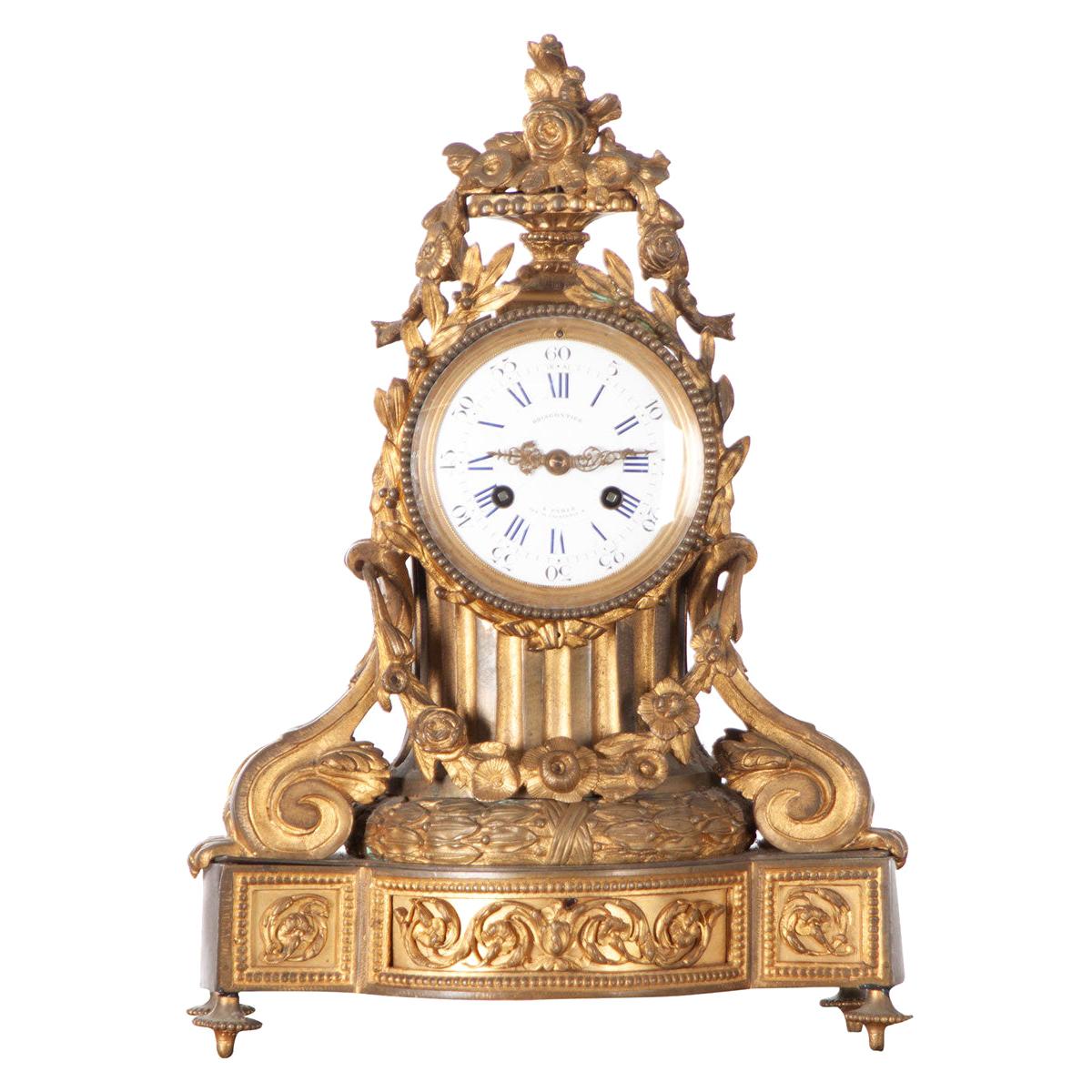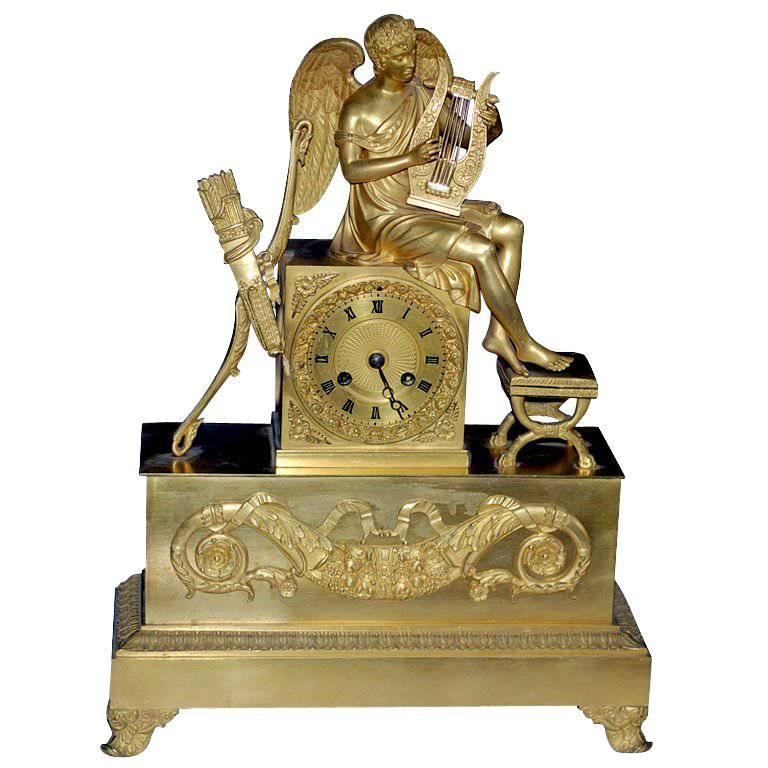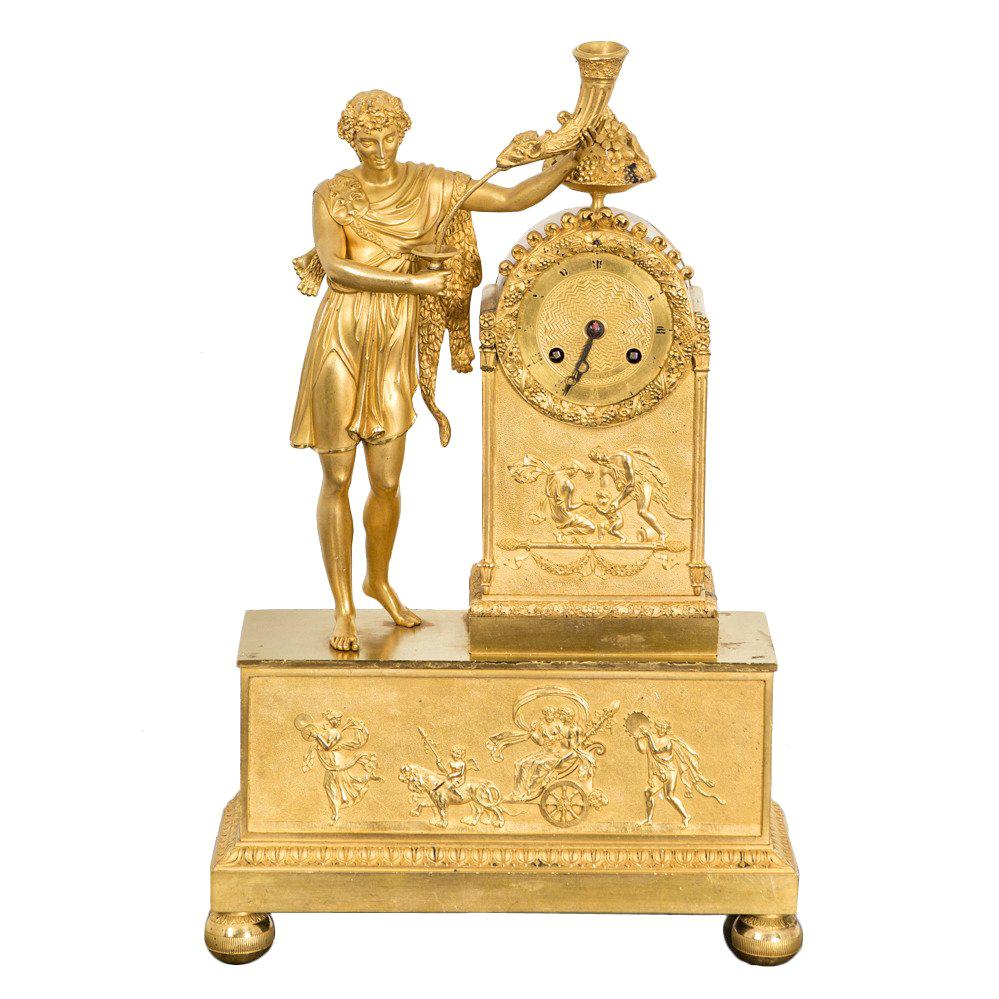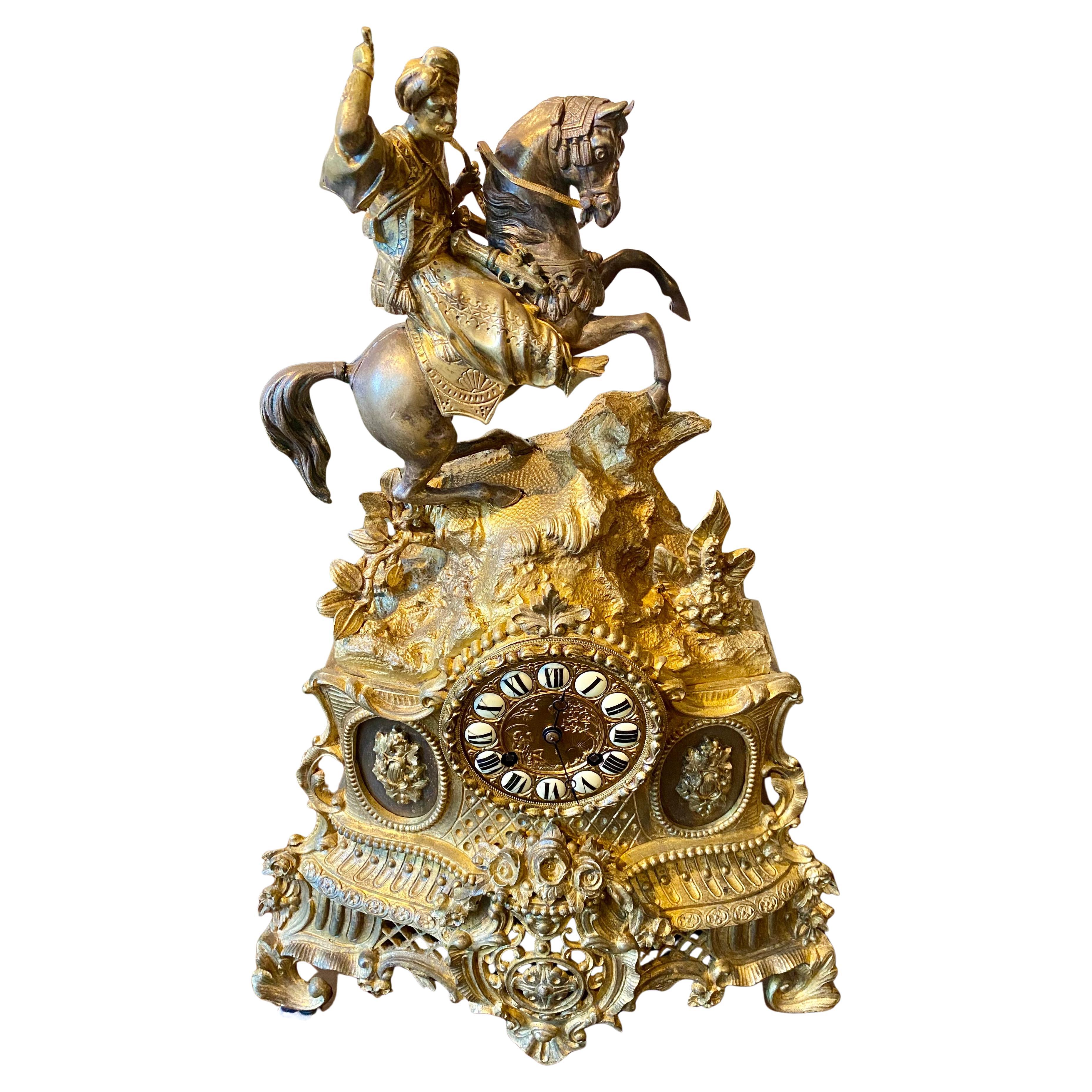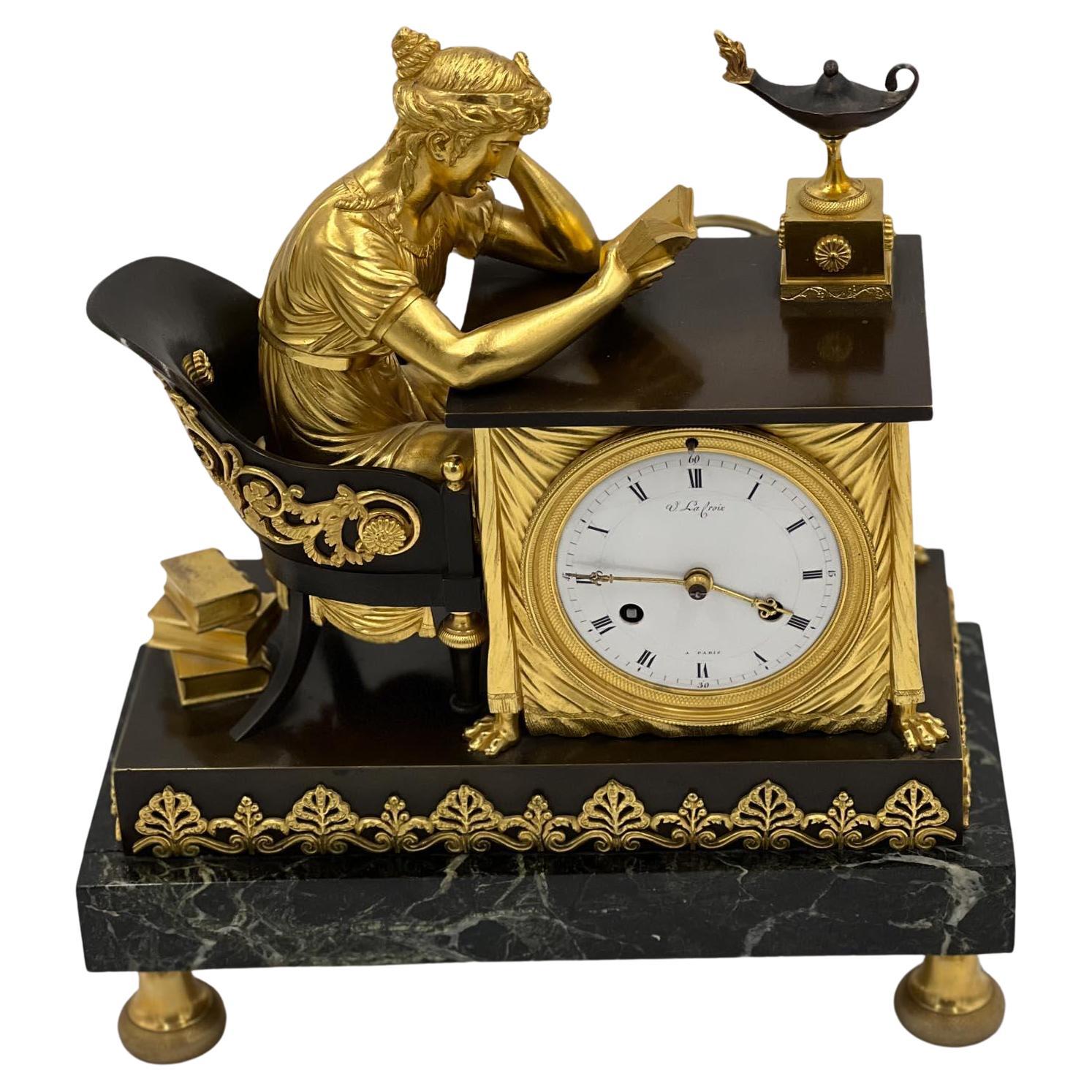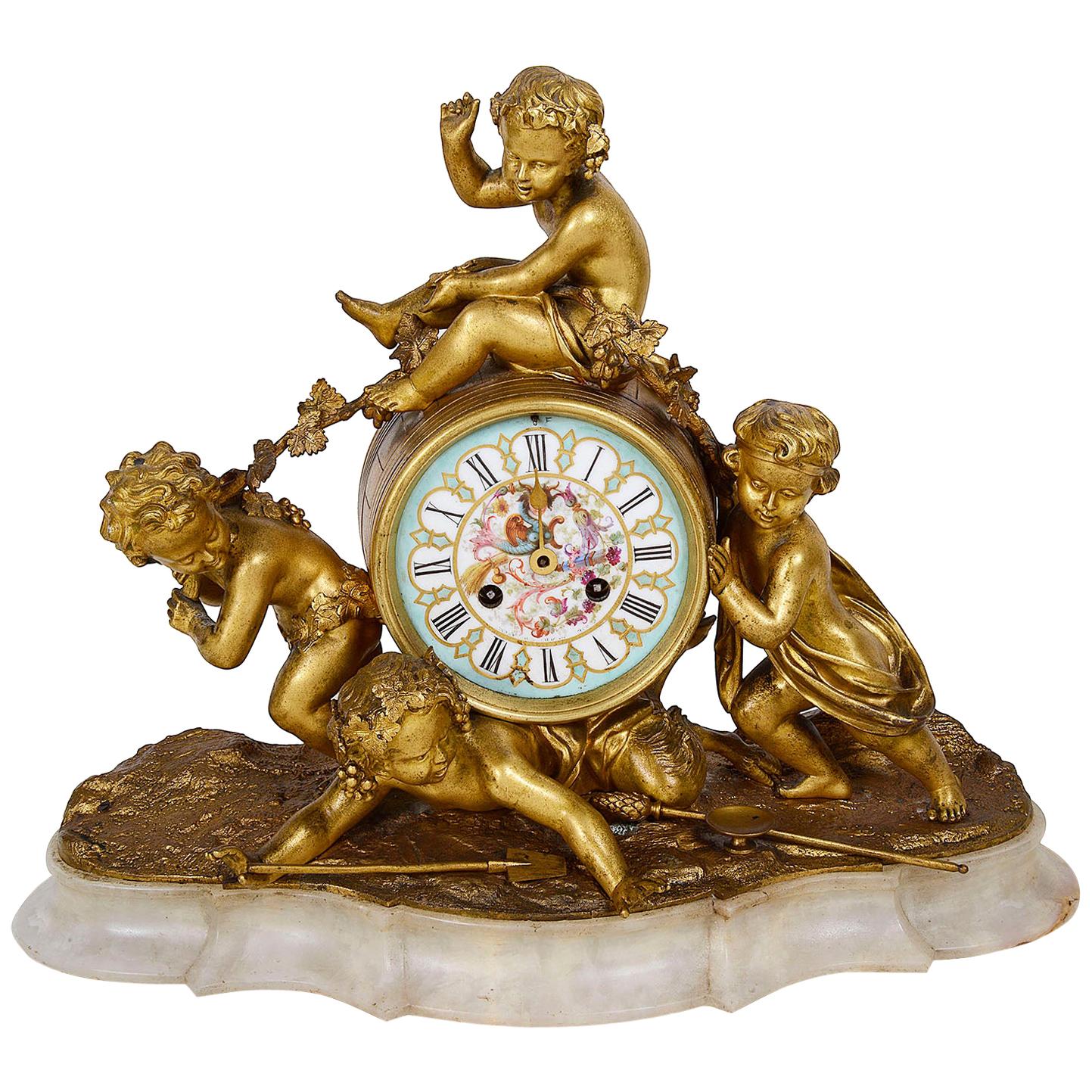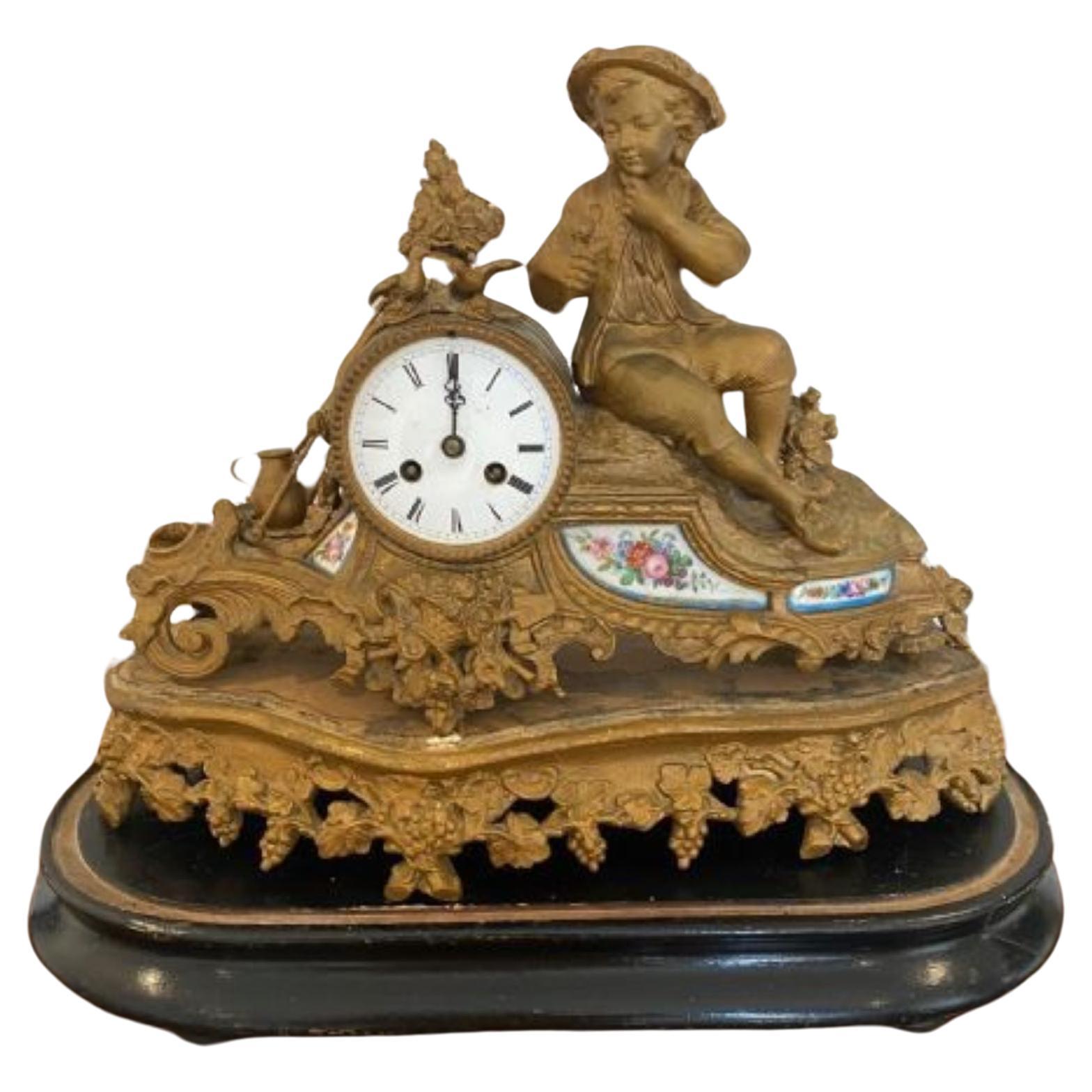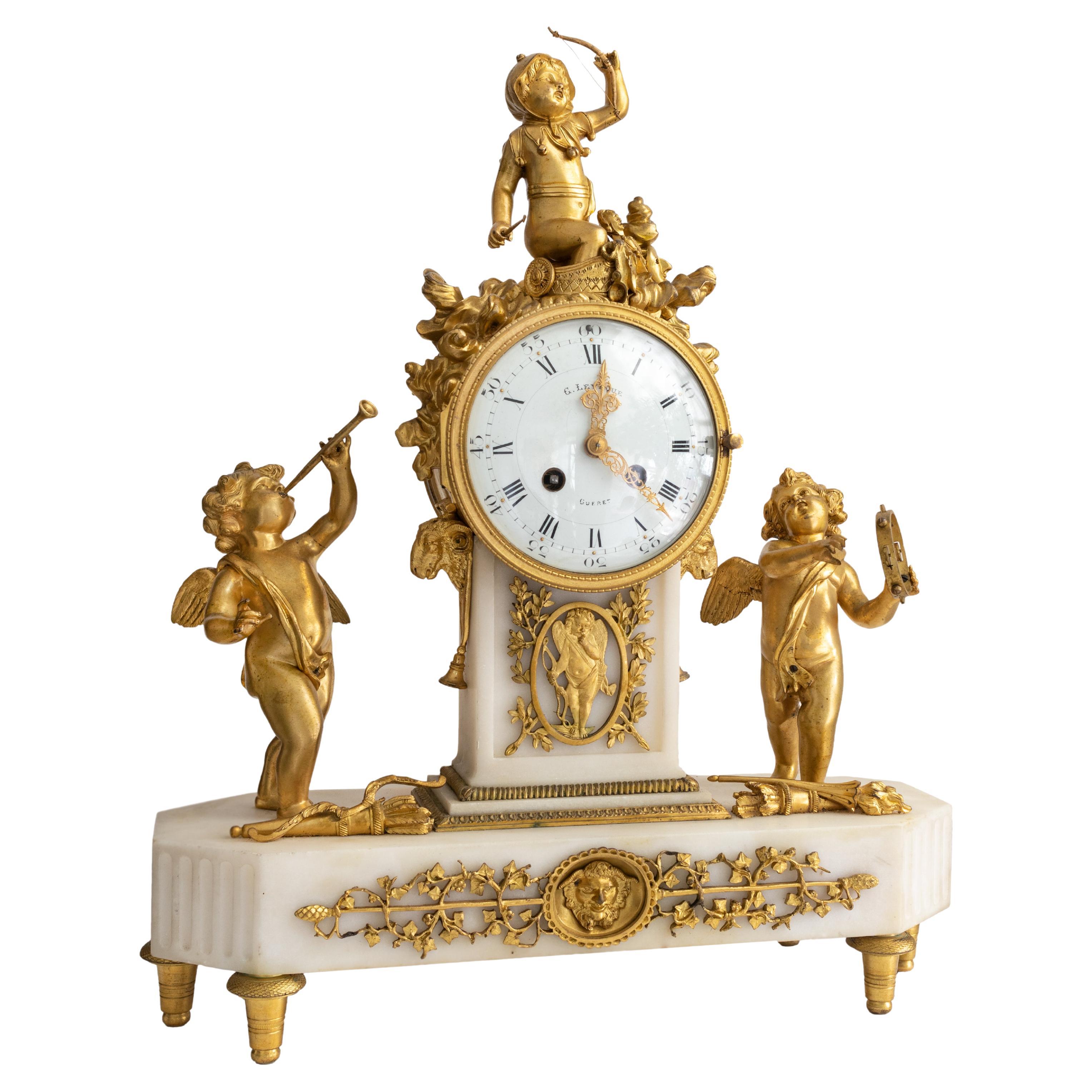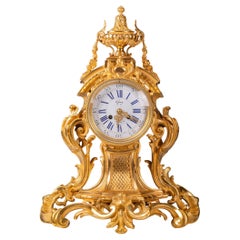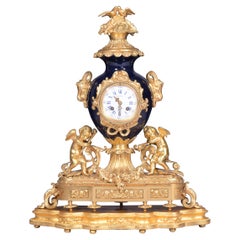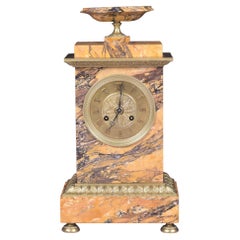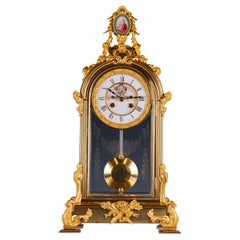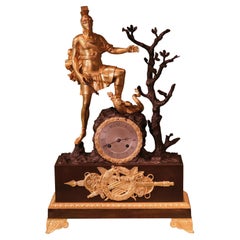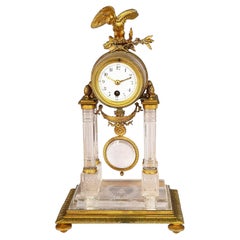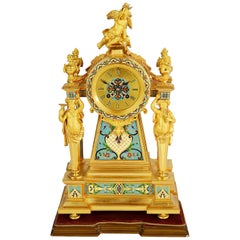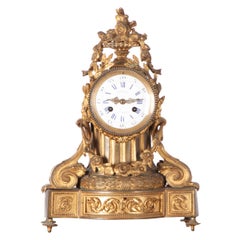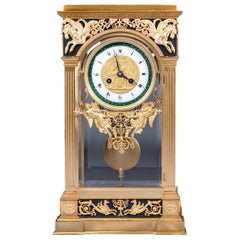
19th Century, French Bronze & Ormolu Mantle Clock by Honegger
View Similar Items
Want more images or videos?
Request additional images or videos from the seller
1 of 9
19th Century, French Bronze & Ormolu Mantle Clock by Honegger
$15,176.17List Price
About the Item
- Dimensions:Height: 16.93 in (43 cm)Width: 9.85 in (25 cm)Depth: 6.3 in (16 cm)
- Style:Neoclassical (In the Style Of)
- Materials and Techniques:
- Place of Origin:
- Period:
- Date of Manufacture:1890
- Condition:Wear consistent with age and use.
- Seller Location:Dublin, IE
- Reference Number:1stDibs: LU5735231479822
About the Seller
5.0
Vetted Professional Seller
Every seller passes strict standards for authenticity and reliability
Established in 2006
1stDibs seller since 2021
9 sales on 1stDibs
Typical response time: 12 hours
Authenticity Guarantee
In the unlikely event there’s an issue with an item’s authenticity, contact us within 1 year for a full refund. DetailsMoney-Back Guarantee
If your item is not as described, is damaged in transit, or does not arrive, contact us within 7 days for a full refund. Details24-Hour Cancellation
You have a 24-hour grace period in which to reconsider your purchase, with no questions asked.Vetted Professional Sellers
Our world-class sellers must adhere to strict standards for service and quality, maintaining the integrity of our listings.Price-Match Guarantee
If you find that a seller listed the same item for a lower price elsewhere, we’ll match it.Trusted Global Delivery
Our best-in-class carrier network provides specialized shipping options worldwide, including custom delivery.More From This Seller
View AllA Large 19th Century French Ormolu Mantle Clock In The Rococo Style
Located in Dublin, IE
A fine 19th century and substantial ormolu clock, of Rococo balloon form, sweeping acanthus swags, scrolls and floral flourishes, which is topped by classical cornucopias. The clock ...
Category
Antique 19th Century French Rococo Mantel Clocks
Materials
Ormolu
19th Century French Louis XV Rococo Style Ormolu & Porcelain Mantle Clock
Located in Dublin, IE
A very fine and most attractive 19th century French Louis XV Rococo Style ormolu and porcelain mantle clock, modelled as an urn with floral finial and goat head masks to the sides, o...
Category
Antique 19th Century French Louis XV Mantel Clocks
Materials
Ormolu
Early 19th Century French Sienna Marble Mantle Clock
Located in Dublin, IE
An exceptional quality early 19th century Sienna marble and ormolu mantle clock, the sienna marble case surmounted by an urn, raised on ormolu bun feet and a rectangular plinth steep...
Category
Antique Early 19th Century French Restauration Mantel Clocks
Materials
Siena Marble, Ormolu
Large 19th Century French Gilt Bronze, Sevres Mounted Four - Glass Mantle Clock
Located in Dublin, IE
A fine large and impressive 19th century gilt bronze mantle clock, surmounted by a Sevres porcelain hand painted plaque finial, above a dome shaped structure, with a dome shaped beve...
Category
Antique 19th Century French Louis XIV Mantel Clocks
Materials
Bronze, Enamel, Ormolu
19th Century French Rouge Marble & Ormolu Clock Garniture
Located in Dublin, IE
A fine 19th Century French Clock Garniture, the Clock with bronze solider surmounted on a domed top with urn finials on four rouge marble pillars, over pierced decorated base on a sh...
Category
Antique 19th Century French Louis XIV Mantel Clocks
Materials
Griotte Marble, Ormolu
19th Century French Boulle Mantle Clock In The Louis XIV Style
Located in Dublin, IE
A fine 19th century Louis XIV style ormolu and brass Boulle style mantel clock, in the manner of Martinot of Paris, the eight day movement striking the half hours on a bell, with key...
Category
Antique 19th Century French Louis XIV Mantel Clocks
Materials
Brass, Ormolu
You May Also Like
Early 19th Century French Bronze and Ormolu 8 Day Mantle Clock
Located in London, GB
An early 19th Century French bronze & ormolu 8-Day striking Clock with silver dial (stamped Douon on inner plate and one spring dated 1824) mounted in unusual bronze & ormolu case depicting centurion slaying dragon...
Category
Antique 19th Century French Regency Mantel Clocks
Materials
Bronze, Ormolu
Classical 19th Century French Crystal + ormolu mantle clock
Located in Brighton, Sussex
A classical crystal 19th Century French Empire style portico mantle clock, with a gilded ormolu Eagle, white enamel clock face and four column supports engraved decoration and a plin...
Category
Antique Late 19th Century French Mantel Clocks
Materials
Crystal, Ormolu
French 19th Century Mantle Clock
Located in Brighton, Sussex
A very good quality French late 19th century gilded ormolu and champleve enamel mantel (fireplace) clock. Having urns and a cherub above the eight day clock that chimes...
Category
Antique 19th Century French Louis XVI Mantel Clocks
Materials
Enamel, Ormolu
French 19th Century Mantle Clock
Located in Baton Rouge, LA
French metal mantle clock with ‘Boiscontier a Paris Rue De Caumartin’ printed on its face. The crest is a basket with elaborate foliate motif over a symme...
Category
Antique 19th Century French Other Wall Clocks
Materials
Metal
Clock Mantle Gilt Bronze Neoclassical Empire French 19th Century France
Located in New York, NY
Clock Mantle Gilt Bronze Neoclassical Empire French 19th Century France. A French mantel clock in gilt bronze. Neoclassical symbols such Cup...
Category
Antique Late 18th Century French Neoclassical Clocks
Materials
Ormolu
$4,500 Sale Price
40% Off
Clock Mantle Gilt Bronze Neoclassical Empire French 19th Century France
Located in New York, NY
Clock Mantle Gilt Bronze Neoclassical Empire French 19th Century France. A French mantle in gilt bronze decorated with neoclassical symbols ...
Category
Antique 19th Century French Neoclassical Clocks
Materials
Ormolu
$6,000 Sale Price
23% Off
